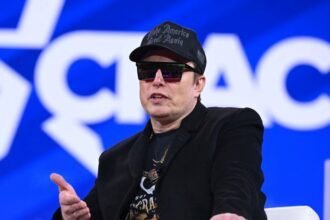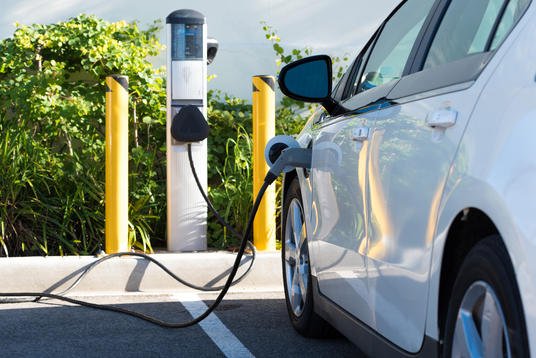India has only a fraction of the raw materials needed to satisfy domestic demand for lithium-ion batteries, – forecast by Crisil to grow 100-fold by 2030, let alone produce on a global scale.
As the world tries to wean itself off dependence on China for crucial battery materials, India is taking bold steps to position itself as an alternative in the electric vehicle supply chain.
The government has unveiled incentives of at least $3.4 billion to expedite its lagging adoption of EVs as Prime Minister Narendra Modi vows to reach net zero by 2070. The idea is that manufacturing the costliest component — batteries — locally will make the end product more affordable for the mass market and set the country up as a potential exporter, tapping into surging global demand.
The initiatives have piqued the interest of billionaires like Mukesh Ambani, whose Reliance Industries Ltd. is building an EV battery facility as part of a broader $76 billion push into clean energy. Ambani’s is among three companies, including scooter-maker Ola Electric Mobility Pvt. and bullion refiner Rajesh Exports Ltd. set to receive incentives under a $2.3 billion program to support advanced battery cell development.
Foreign automakers are also vying for a slice of the nascent shift to electric vehicles in the world’s fourth-biggest auto market. On Wednesday, Suzuki Motor Corp. President Toshihiro Suzuki said that the company plans to invest 100 billion rupees in EV and battery manufacturing in India.
With gigawatt-scale manufacturing facilities planned, India could carve out a role as an exporter of lithium-ion cells to European and American markets, said Rahul Prithiani, senior director for energy, sustainability, and commodities at Crisil Ltd., the local analytics unit of S&P Global. “But for this, India needs to secure robust supply chains along with recycling capabilities,” he said.
And therein lies the biggest challenge to India’s EV ambitions. The world’s second most populous country has only a fraction of the raw materials needed to satisfy domestic demand for lithium-ion batteries — forecast by Crisil to grow 100-fold by 2030 — let alone produce on a global scale.
As the world moves away from gasoline-fueled combustion engines, demand for lithium, nickel, cobalt, and other metals that go into lithium-ion batteries is soaring. BloombergNEF estimates that the global appetite for the metals used in next-generation batteries increased 50% last year alone and will nearly quadruple by the end of the decade. Supplies are getting tight, and that’s already driving up costs.
“The entry barriers are quite high,” said Jasmeet Singh Kalsi, director of Manikaran Power Ltd., which is setting up India’s first lithium refinery and scouting for nickel, cobalt, and copper assets overseas. “China has captured most of it.”
Manikaran could buy spodumene, a source of lithium, for $500 a ton in 2019. “Today,” said Kalsi, “the prices are around $5,000 a ton.”
China’s dominance in lithium extends through the supply chain; its companies already have agreements with major lithium-producing nations and a head-start in processing the raw material into battery-grade inputs as well as manufacturing the storage packs themselves.
India has a long way to go to catch up, and also faces competition from other countries, including the US, which is pushing to grow domestic battery production in an effort to break China’s hold on the market.
Indian companies are in trade talks to procure more of the material from countries like Australia, the source of roughly half the world’s lithium exports. State-backed Coal India Ltd., the country’s largest miner, said it also plans to extract more of the metals and minerals used in batteries, though few details have been released. India announced a small lithium discovery near Karnataka in 2021 and is planning to open up mining of key minerals to private companies, but will have to primarily look overseas.
Copper, another metal used in EVs, is also in focus. Hindalco Industries Ltd., India’s biggest producer of copper, estimates that demand is likely to more than double in the next 10 years — a particularly sensitive dynamic given the country’s increasing reliance on importing the metal.
India flipped to being a net importer of copper following the closure of Vedanta Ltd.’s 400,000 tons-a-year plant in 2018, which cut the country’s output by about 40%. To reverse that trend, billionaire Gautam Adani — Asia’s richest man and one of Ambani’s chief rivals — is building a 500,000-tons-a-year copper refinery in western India. His Adani Enterprises aims to start production by the first half of 2024.
Lithium and copper aren’t the only metals that are in short supply. India also lacks nickel, cobalt ore, graphite, and manganese. In order to meet a projected domestic demand of 200 gigawatt-hours of lithium-ion batteries by 2030, India will need about 35,000 tons of nickel sulfate and 11,000 tons of both manganese sulfate and cobalt sulfate, according to Crisil.
Global demand for the purest form of nickel will increase to 1.34 million tons by 2030 from 100,000 tons in 2019, according to forecasts from BloombergNEF, which conducts new energy research.
“While India has large manganese and graphite resources, production has yet to achieve scale,” said Komal Kareer, an analyst at BloombergNEF. “It remains an import-dependent market and that is unlikely to change in the next decade.”
That means making lithium-ion batteries won’t be cheap, hampering India’s plans to develop more affordable EV models that can be sold domestically and exported to lower-income countries.







